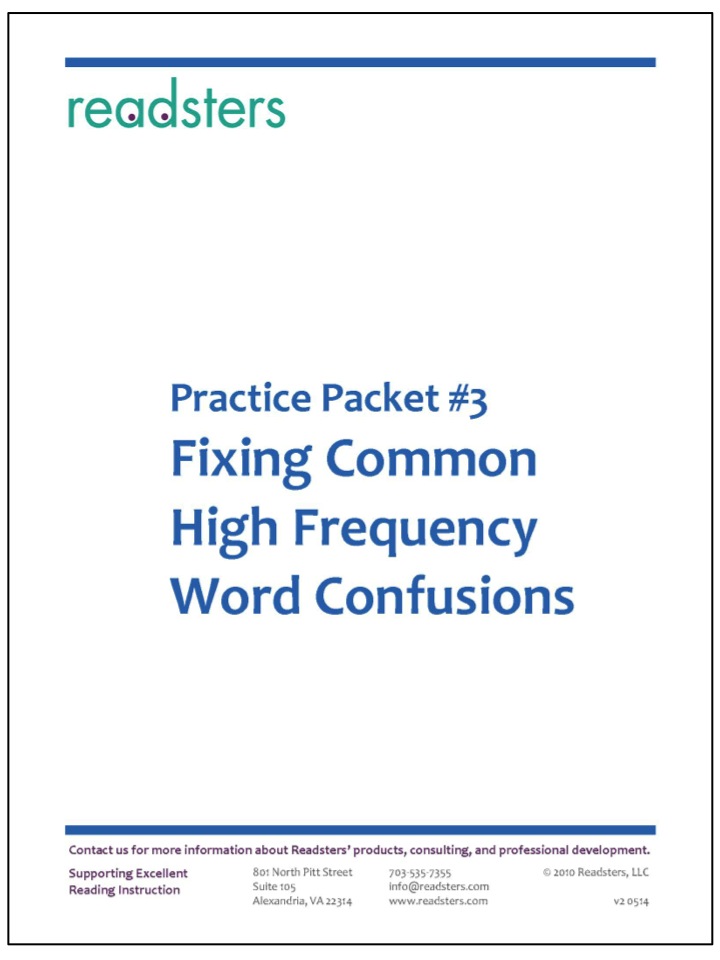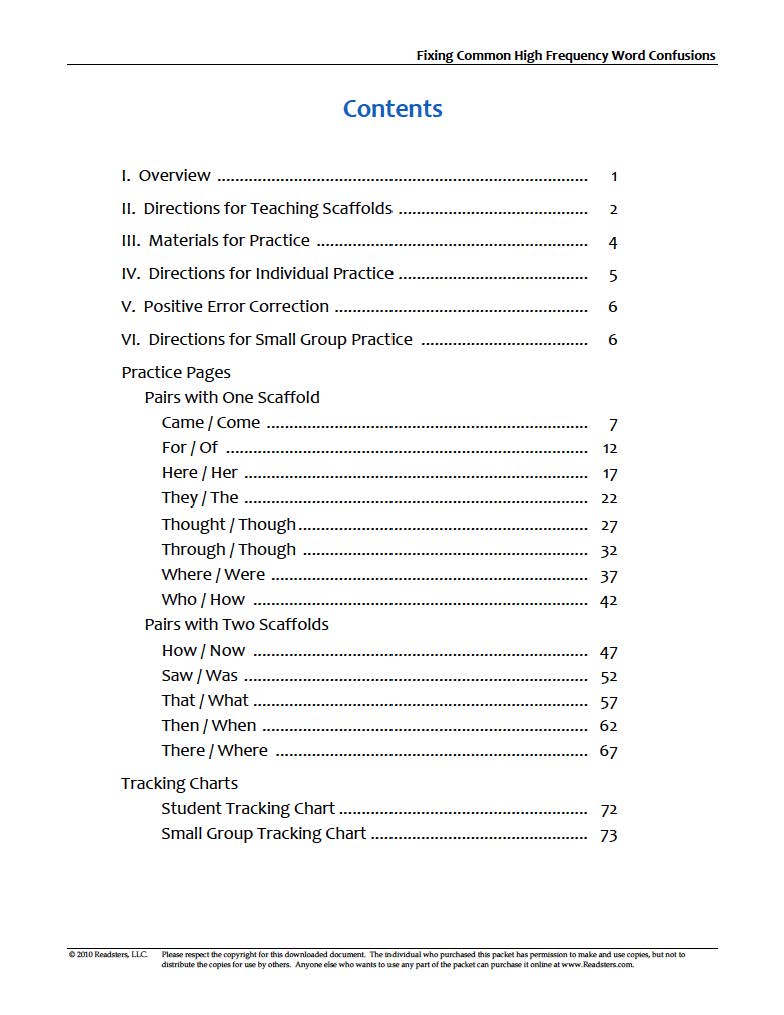Use this packet to fix high frequency word confusions!
For confusion with came-come, for-of, here-her, they-the, thought-though, through-though, where-were, who-how, how-now, saw-was, that-what, then-when, and there-where.
Students use practice pages daily working with a teacher to develop accuracy and automaticty when reading commonly confused high frequency words.
During practice, students use multi-sensory scaffolds to know with confidence how to differentiate between two confusing words. The student learns a scaffold for one or both of the words, depending on the words in the pair.
Scaffold for only one word in pair – With some pairs, the student uses a scaffold for only one word. For example, when a student confuses her and here, the student uses a scaffold for here. When the student sees the word is here, the student says, “Here loves e” while underlining the final ‘e’, then reads “here”. When the student sees the word is her there is no scaffold. The student realizes the word does not end with the letter ‘e’, and reads, “her”.
Scaffolds for both words in pair – For some pairs, the student uses scaffolds for both words. For these words, the student says the sound of the initial letter while underlining the letter and then reads the word. Consider a student who confuses was and saw. The scaffold for was is to say the sound /w/ while underlining the letter ‘w’, and then to read “was”. The scaffold for saw is to say the sound /s/ while underlining the letter ‘s’, and then to read “saw”.
Once students demonstrate mastery with reading the words accurately with the scaffold(s), they move to practice reading the words without the scaffold(s).
When students finish the practice they no longer confuse the words.
Product Info
| View Table of Contents | View Sample Practice Pages | |


